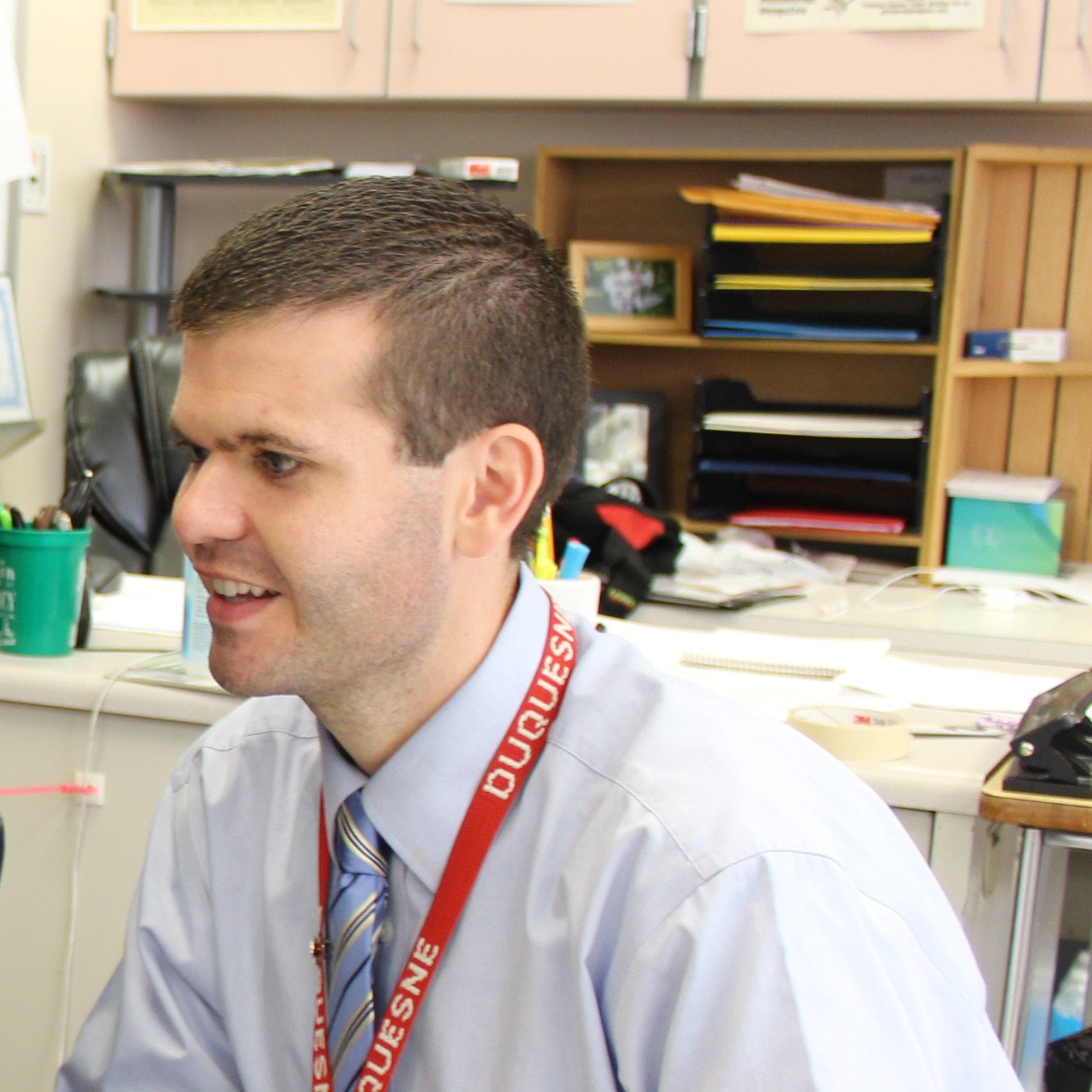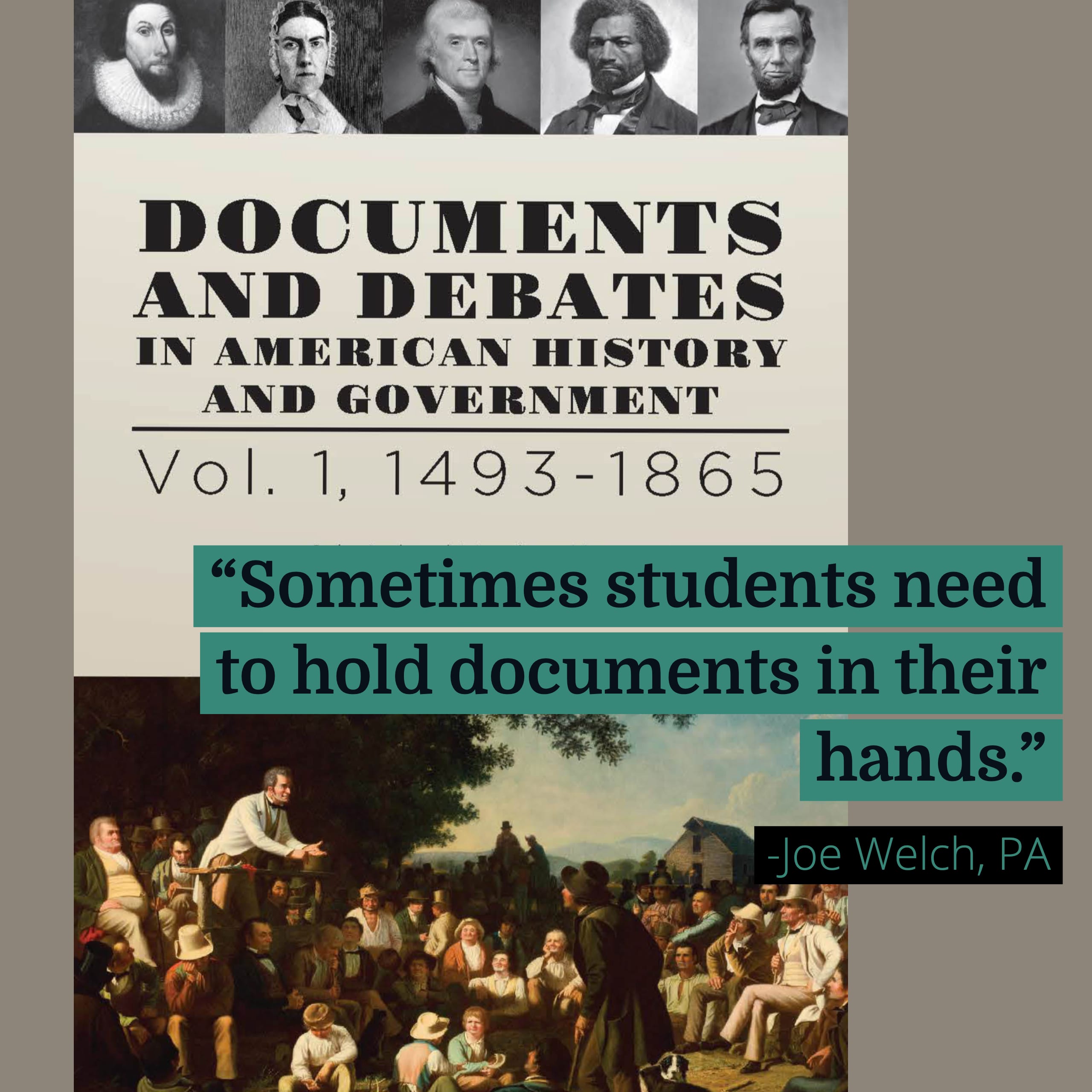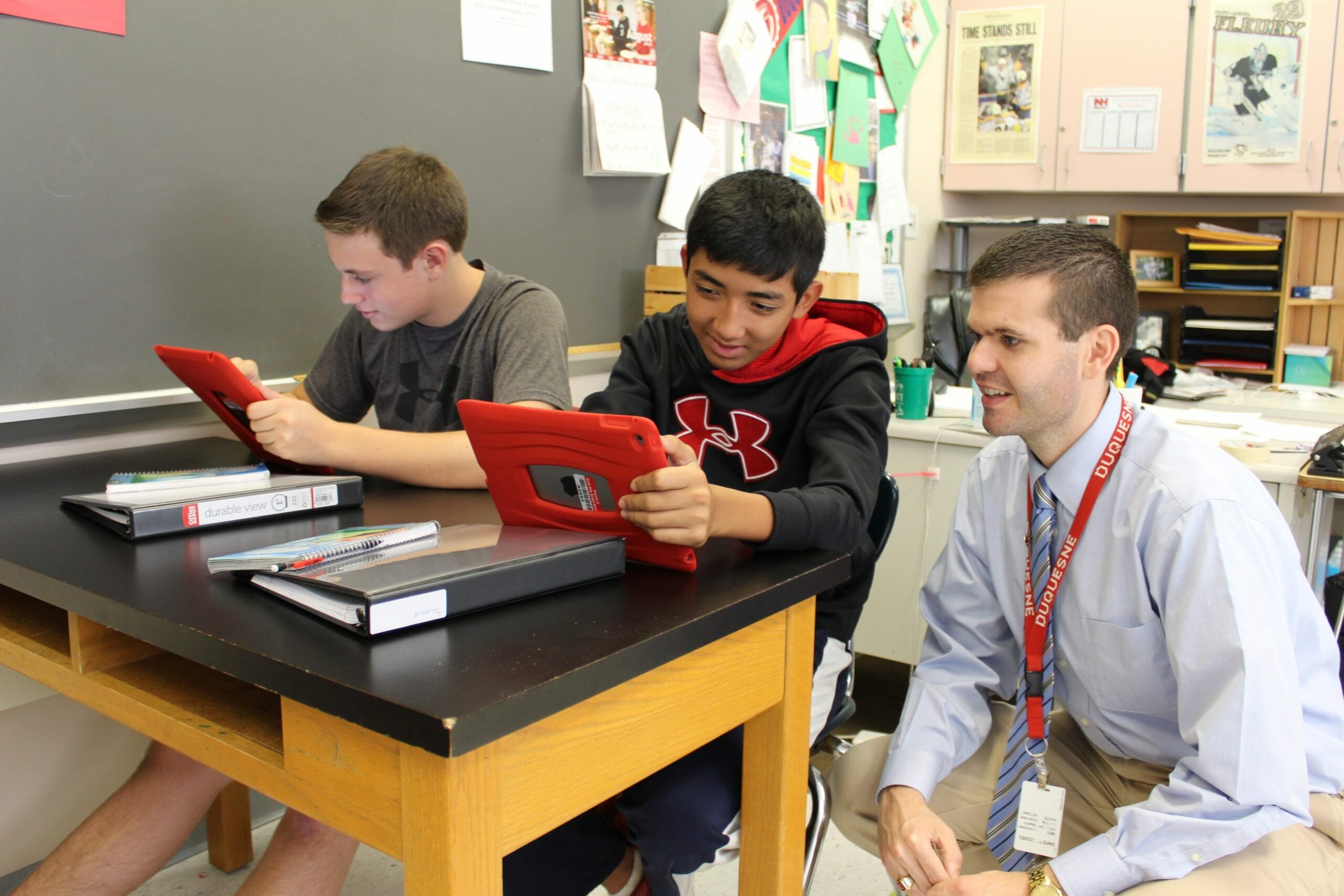Meet Our Teachers
Joe Welch

Students “Unlock” Clues in Primary Documents, Finding Constitution Booklet
Joe Welch, an American history teacher at North Hills Middle School in Pennsylvania, relies on Internet technology for access to primary historical documents. He sends his eighth graders to online libraries such as the Teaching American History (TAH.org) collection “almost every day.” This helps students learn our nation’s history directly from those who lived it. When students understand earlier Americans as those Americans understood themselves, empathizing with the way they thought and felt, they begin to relate their own life challenges to those of the past. “Technology and styles may change,” Welch tells his students, “but human emotions do not change.”

Teachers with these high goals may need to step back into the role of student from time to time, to check whether their approach works. Welch had this opportunity at a Teaching American History weekend colloquium (co-sponsored by the Liberty Fund) on George Washington last spring.
A group of twenty teachers sat together discussing Washington’s speeches and letters, guided by an engaging scholar: Naval War College Professor Stephen Knott, a biographer of Washington and Hamilton and a faculty member in Ashland’s Master of Arts in American History and Government (MAHG) program, “I had not discussed history in this way since college,” Welch said. Knott helped teachers answer the questions that arise when reading primary sources: “What was Washington’s motive when he wrote this? What other contemporary events affected his thinking?” Discussing such questions pointed up those unexpected layers of meaning that Welch hopes his eighth graders will discover.
Using Technology and Team Competition to Introduce Primary Documents
Later, Welch attended a conference on classroom technology. One workshop suggested a classroom application of the “escape room” game, in which a team of friends is locked in a room and uses clues to find a way out. In the educational version, students go to websites to find clues to open a box with multiple locks. “How can I use this to introduce students to primary sources?” Welch wondered.
Welch thought of the most important primary source he uses in his class: the US Constitution. He carries a pocket Constitution at all times. “We study it as we cover the Founding; in later lessons I pull it out and refer to it. I wanted my students to find Constitution booklets inside the lockbox.”
So Welch reached out to his new contacts at TAH.org, who agreed to donate enough copies for each student in his five classes.

In the game Welch designed, students examined six sets of short primary sources to open six locks. Documents included short letters, speeches, images, even a hand-written Electoral College vote tally. It was early in the school year, and Welch wanted to demonstrate the range of documents historians use.
He presented a scenario: “A new President has been elected, and he wants to create his own version of American history. He is destroying all our primary source documents. But our Founding Fathers locked away one thing to prevent a tyrant from taking power and erasing our memories. What is it? Open the box to find out. You have 40 minutes until the President’s executive order takes effect.”
“It was far-fetched, but middle-schoolers ate it up,” Welch said. “I’d never seen students so eager to examine primary sources. They read each document, then read it again.”
A Variety of Clues and Connections
The locks opened in different ways. One set of clues directed students to a key hidden in the room. Another lock was opened by a word; two required a combination of digits. Finding keys required making connections between documents. For example, one set of clues contained a dated copy of the Gettysburg Address and a copy of the Declaration of Independence with the date blanked out. Students realized that the first words of the Gettysburg speech, “Four score and seven years ago,” referred to 1776, the year Americans announced their independence—and also the four digits that opened the lock.
Since Welch had built two lockboxes, students competed in teams. This introduced another skill: collaborative reading. “They divided to conquer, then worked as groups to figure out the remaining clues.”
A team in every class met the 40-minute deadline.
Impressed with Welch’s creativity, TAH.org donated twenty copies of its anthology 50 Core Documents That Tell America’s Story to his classroom. Thanking TAH for this old-fashioned supplement to Internet resources, Welch said, “sometimes students need to hold documents in their hands.”
Joe Welch was named 2018 Pennsylvania Social Studies Teacher of the Year by the Gilder Lehrman Institute.
